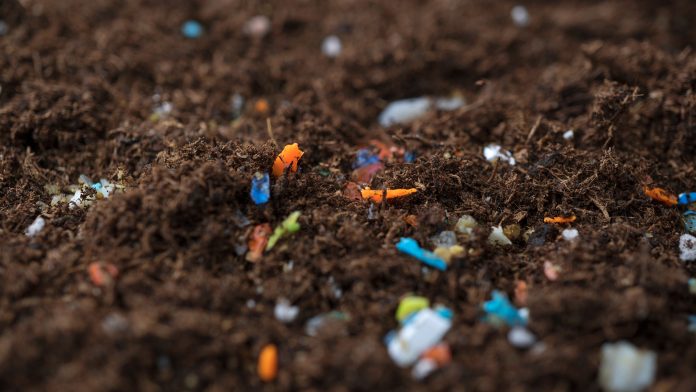Scientists at the University of California, San Diego, and the materials science company Algenesis have developed biodegradable microplastics that break down in under seven months.
Finding viable alternatives to traditional petroleum-based plastics and microplastics, such as biodegradable microplastics, has never been more important due to their impact on our planet and our health.
Microplastics are tiny, nearly indestructible fragments shed from everyday plastic products. As we learn more about microplastics, the news keeps getting worse.
Already well-documented in our oceans and soil, we’re now discovering them in the unlikeliest of places: our arteries, lungs and even placentas.
Microplastics can take anywhere from 100 to 1,000 years to break down, and, in the meantime, our planet and bodies are becoming more polluted with these materials every day. Could the new biodegradable microplastics save us just in time?
The research, ‘Rapid biodegradation of microplastics generated from bio-based thermoplastic polyurethane,’ is detailed in Nature Scientific Reports.
Understanding the implications of microplastics
“We’re just starting to understand the implications of microplastics. We’ve only scratched the surface of knowing the environmental and health impacts,” stated Professor of Chemistry and Biochemistry Michael Burkart, one of the paper’s authors and an Algenesis co-founder.
“We’re trying to find replacements for materials that already exist and ensure that biodegradable microplastics break down at the end of their useful life instead of collecting in the environment. That’s not easy.”
Robert Pomeroy, another professor of chemistry and biochemistry and Algenesis co-founder, added: “When we first created these algae-based polymers about six years ago, our intention was always that they be completely biodegradable.
“We had plenty of data to suggest that our material was disappearing in the compost, but this is the first time we’ve measured it at the microparticle level.”
Putting biodegradable microplastics to the test
To test its biodegradability, the team ground their product into fine microparticles and used three different measurement tools to confirm that, when placed in a compost, microbes digested the material.
The first tool was a respirometer. When the microbes break down compost material, they release carbon dioxide (CO2), which the respirometer measures.
These results were compared to the breakdown of cellulose, which is considered the industry standard of 100% biodegradability. The plant-based polymer matched the cellulose at almost 100%.
Next, the team used water flotation. Since plastics are not water soluble and they float, they can easily be scooped off the surface of water. At intervals of 90 and 200 days, almost 100% of the petroleum-based microplastics were recovered, meaning none of them had biodegraded.
On the other hand, after 90 days, only 32% of the algae-based biodegradable microplastics were recovered, showing that more than two-thirds of them had biodegraded. After 200 days, only 3% was recovered indicating that 97% of it had disappeared.
The last measurement involved chemical analysis via gas chromatography/mass spectrometry (GCMS), which detected the presence of the monomers used to make the plastic. This indicated that the polymer was being broken down into its starting plant materials.
Scanning electron microscopy further showed how microorganisms colonise the biodegradable microplastics during composting.
“This material is the first plastic demonstrated to not create microplastics as we use it,” said Stephen Mayfield, a paper coauthor, School of Biological Sciences professor and co-founder of Algenesis.
“This is more than just a sustainable solution for the end-of-product life cycle and our crowded landfills. This is actually plastic that is not going to make us sick.”









